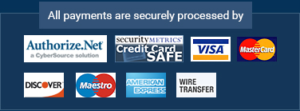Part A
James Mason has come to you for some help in computing his income from his investments. He is trying to plan for the payment of his 2016 taxes and wants an idea as to how much that tax bill will be. James is married to Deborah and they have a daughter, Mary, who is 22. James has provided you with the following details regarding his activities for 2016.
James âs income for the year is as follows:
Salary â gross $85,000
Less: CPP and EI contributions (3,499)
United Way charitable contributions through payroll deductions* (500)
Bonus (based on company profits for the year) 10,000
$91,001
The costs of travel, partially for work, are as follows (he now has a 4×4 truck):
Gas $5,000
Maintenance 1,000
Licence 200
Insurance 1,800
$8,000
*Note that James has regularly made charitable contributions yearly on his payroll deductions.
He has discovered that he drives mostly for work. During this year, he has driven 34,000 km for work and only 6,000 km for personal use. He purchased his 4×4 from Red Rose Toyota, on January 10, 2016, for $32,500 plus PDI and delivery of $1,000, plus HST, for a total of $37,855. Additional costs of travel while away from the area of his home are train fare ($2,500), accommodation ($3,000), and meals ($2,000).
Under James âs contract of employment, he is required to pay all of his own employment-related expenses. He regularly travels out of the municipality on employment-related matters.
He has owned Chamomile Co. shares for a number of years. Chamomile is a public Canadian company. The shares paid total dividends of $0.06 per share in 2016. On October, 1, 2016, after the dividend payments for the year, James sold 800 shares for $28.125 per share for total proceeds of $22,500. Brokerage fees are $200. Based on his history of transactions, at the time of the sale, he had 2,750 shares at an adjusted cost base of $6.50 per share.
At the beginning of 2016, James had two rental properties. These properties are expected to have the following operating cash flows associated with them:
#1 #2
Gross rents received………………………………………………… $ 20,000 $ 16,000
Expenses related to earning rental income:
Advertising (for tenants)…………………………………….. 200 â
Property taxes………………………………………………… 1,400 3,000
Utilities (landlord provided)………………………………… 4,200 2,800
Property #1 was purchased in 1993 at a cost of $90,000 for both the land and building. The cost of the land was $25,000 of this total purchase price. Property #2 was purchased in 2008 at a total cost of $105,000; the fair market value of the land at the time was $60,000. The UCC balance in Class 1 for property #1 was $25,948 and Class 1 for property #2 was $33,139 at January 1, 2016.
During 2016, the local community enacted strict new bylaws on the safety requirements of rental properties. To upgrade the two buildings to the new code would require $40,000 for property #1 and $60,000 for property #2. As a result, James decided to improve #1 and paid $40,000 during July 2016. However, he decided to sell property #2 and did so for $248,000, effective May 5, 2016. The fair market value of the land was appraised to be $120,000 and the building $128,000.
James used the proceeds, net of the $40,000 needed for property #1, to purchase a new sixplex on Orange Pekoe Lane. The cost of the new property was $900,000, of which $150,000 related to the cost of the land. This property closed on August 1, 2016. Interest on the $700,000 mortgage is $21,800 for the last five months of the year. He was able to rent the buildingâs units to students beginning in September with cash flows as follows:
Gross rents received…………………………………………………….. $ 18,000
Expenses related to earning rental income:
Advertising (for tenants)……………………………………… 500
Property taxes…………………………………………………. 3,400
Utilities (paid by tenants)………………………………………………. â
Required:
Calculate James âs income under Division B. Show supporting computations whether or not relevant to your final answer. For items excluded from your calculations, describe why you excluded them. Ignore the HST rebate for this and subsequent years.
Part B
Upon further questioning, James revealed that his daughter, Mary, has very poor eyes. It costs $800 to buy her special contact lenses that last about three years. The last pair was purchased in November 2015. Even with the contact lenses, she can barely function and cannot obtain regular employment and so has no income. In spite of these hardships, she is attending the local university and with the aid of special equipment, purchased in January 2016 for $10,000, is doing quite well. Other medical receipts total about $200 per year and James cannot remember ever claiming the medical credit. Maryâs tuition for the eight months that she will be in full-time attendance is $4,000.
While Mary continues to live at home, Deborah has decided to return to the work force and has a casual job. She is expected to earn $5,000 by the end of the year.
Required:
Calculate James âs federal taxes payable for 2016.

